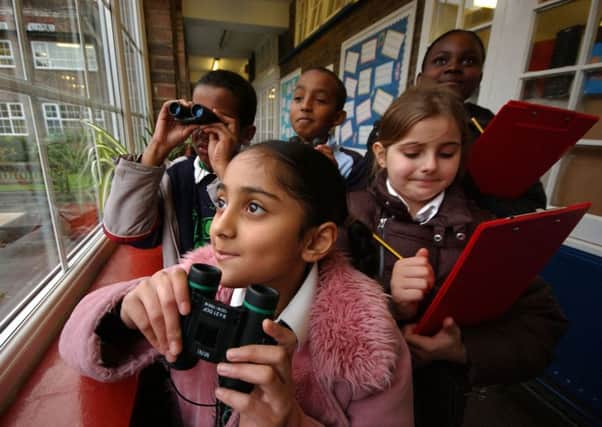Ilona Amos: Counting birds helps children get outside and connect with nature


In lots of homes the new term marks a welcome return to routine and calls an end to some of the bad habits and overindulgence that have taken hold over the holidays.
Some children went back yesterday and many others will return today for the first day of term, amid vows of living a healthier and more wholesome lifestyle in 2018.
Advertisement
Hide AdAdvertisement
Hide AdJanuary can be a long, dark month, with complaints that there’s nothing much to look forward to now that the festive season is behind us. But studies have shown there are numerous health benefits from just being in the outdoors and getting in touch with the natural world, so a good resolution for anyone is to spend more time outside.
The RSPB has just launched its annual Big Schools Birdwatch, which presents a great opportunity for the younger generation to start the year on a good footing while learning about nature. The initiative, now in its 16th year and the biggest of its kind in the world, ties in to the charity’s nationwide Big Garden Birdwatch.
Children taking part in the survey get a chance to put their books down and go outside to experience and learn about the wildlife living in their local community. At the same time they are helping conservationists paint a picture of how some of our best loved bird species are faring.
Laura Curtis-Moss, education officer for RSPB Scotland, says the survey is fun, easy to set up and works for all ages. It also helps teach a variety of skills, including identification of bird species and numeracy. “This time of year, when the weather can be rather dull and cold, spotting birds either outside or from the classroom can bring an exciting flash of colour to the day. With children sadly spending less time outside in nature it’s really important that they are able to find out more about the natural world around them whenever possible.”
Participants spend an hour watching and counting the birds that visit their outdoor space, wherever that might be, before sending their results to the RSPB.
Close to a million school children across the UK have taken part in the Big Schools Birdwatch since its launch in 2002, with almost 7,000 children and teachers in Scotland helping in last year’s count.
The tuneful blackbird held on to the number one spot as the most common playground visitor in 2017, with 87 per cent of schools spotting one during their watch. Robins, house sparrows and wood pigeons also featured prominently in the results, as well as smaller birds such as blue tits, coal tits and wrens.
A recent poll revealed that 96 per cent of teachers believe it is important for children to experience nature at school. And an encouraging 77 per cent of pupils agree.
Advertisement
Hide AdAdvertisement
Hide AdOther research, carried out by the University of Stirling, has shown that learning in green areas like parks, gardens, wildlife areas and woodland, as well as on residential outdoor trips, increased children’s engagement and enriched the learning experience in many ways.
The Big Schools Birdwatch offers a great opportunity for children to get outside, even if just for a little while, and engage with some of our favourite wildlife. The best part is they don’t need to go far to take part – just count the birds in the playground or local park.